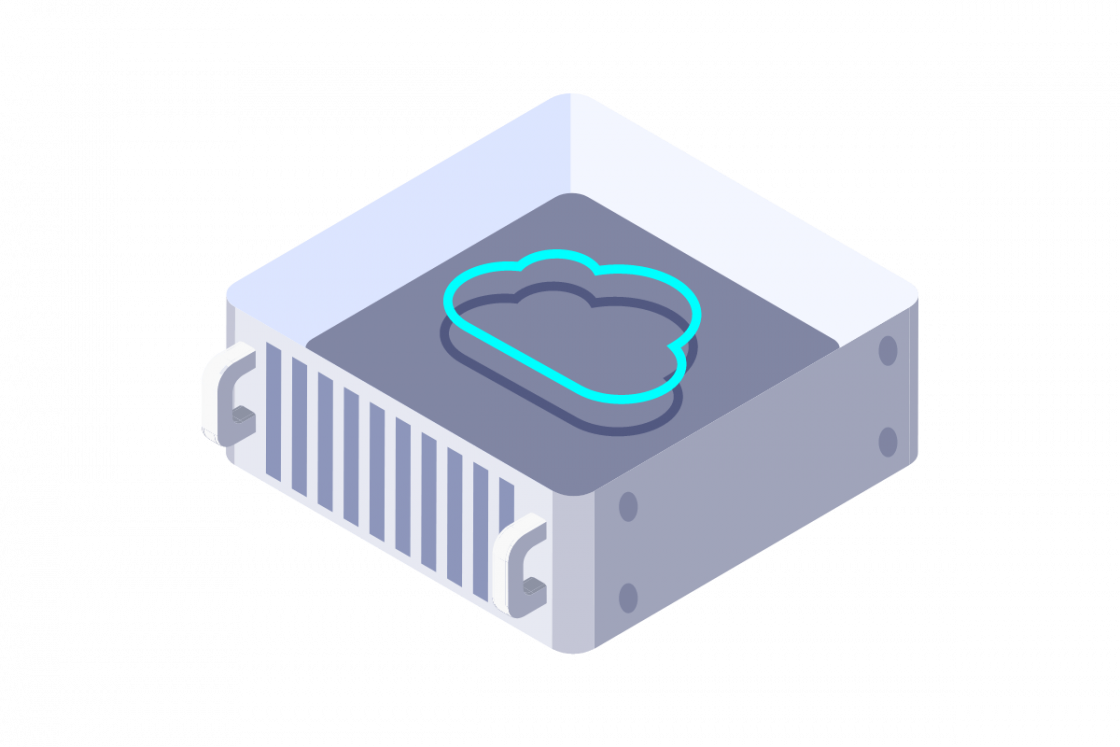What is vSAN?
In the landscape of data center management and cloud computing, organizations are constantly seeking efficient ways to handle storage needs without the complexities of traditional hardware setups.
Enter vSAN, or Virtual Storage Area Network, a technology that revolutionizes how storage is provisioned and managed in virtualized environments. At its core, vSAN is a software-defined storage solution that aggregates local storage devices across a cluster of servers to create a shared pool of storage resources.

This approach eliminates the need for dedicated servers’ storage hardware, making it a cost-effective and scalable option for modern IT infrastructures.
Developed by VMware, vSAN integrates seamlessly with hypervisor technologies, allowing administrators to manage storage alongside compute and networking resources from a single platform.
It's particularly appealing in hyper-converged infrastructure (HCI) setups, where storage, compute, and networking are combined into a unified system. By leveraging the power of virtualization, vSAN turns commodity hardware into a robust storage system capable of supporting mission-critical applications. This not only simplifies operations but also enhances performance and resilience, addressing key data management challenges as of 2025.
VMware vSAN: Optimising Virtual Storage Infrastructure
VMware vSAN is at the forefront of optimizing virtual infrastructure by transforming standard x86 servers into a high-performance storage system. Unlike traditional storage area networks (SANs) that rely on separate, expensive hardware arrays, vSAN uses software to pool direct-attached storage (DAS) from multiple hosts in a vSphere cluster. This creates a distributed, shared storage environment that's highly available and easy to scale.
One of the primary ways vSAN optimizes infrastructure is through its hyper-converged design. In HCI, storage is not an isolated component but is integrated with compute resources, reducing latency and improving overall efficiency. Administrators can dynamically allocate storage based on workload needs, ensuring that resources are used optimally without overprovisioning. For instance, vSAN's policy-based management enables IT teams to define storage policies that automatically adjust to requirements such as performance, capacity, or data protection levels.
Moreover, vSAN supports all-flash and hybrid configurations, catering to different performance tiers, some of which are fast enough for running a smart contract server. All-flash setups deliver ultra-low latency for demanding applications, while hybrid options balance cost and speed by combining SSDs for caching with HDDs for capacity. This flexibility is crucial in 2025, where edge computing and AI-driven workloads demand rapid data access. By optimizing resource utilization, vSAN reduces total cost of ownership (TCO) by up to 50% compared to traditional SANs, as it minimizes hardware sprawl and simplifies management.
Security is another optimization pillar. vSAN includes built-in encryption for data at rest, ensuring compliance with regulations like GDPR or HIPAA. It also integrates with VMware's broader security ecosystem, offering features such as micro-segmentation to protect against various threats. In essence, VMware vSAN streamlines virtual storage, making it more agile, secure, and cost-effective for enterprises navigating the complexities of modern IT.
Understanding How vSAN Works
To grasp how vSAN operates, it's essential to break down its architecture and core processes. At the heart of vSAN is the concept of a distributed storage layer built on top of VMware vSphere. When you enable vSAN on a cluster, each host contributes its local storage devices—such as SSDs or HDDs—to form a single, shared datastore. This datastore is accessible to all virtual machines (VMs) in the cluster, behaving much like a traditional SAN but without the physical hardware.
vSAN works by organizing storage into objects and components. Each VM's data is broken into objects (like virtual disks), which are then divided into components distributed across the cluster for redundancy. This distribution utilizes a technique called RAID-like striping and mirroring, ensuring data availability even in the event of a host failure. For example, in a faults-to-tolerate (FTT) policy set to 1, vSAN maintains two copies of data plus a witness component, allowing the system to withstand one failure without data loss.
The caching mechanism is a key enabler of performance. vSAN designates a portion of faster storage (typically SSDs) as a read/write cache, accelerating I/O operations. Data is first written to the cache and then destaged to capacity tiers. This hybrid approach ensures high throughput for read-heavy workloads. Additionally, vSAN's deduplication and compression features reduce storage footprint by eliminating redundant data blocks, which is vital for dense environments like virtual desktop infrastructures.
Networking also plays a critical role. vSAN requires a dedicated network for storage traffic, often using 10GbE or higher speeds to minimize latency. The system continuously monitors cluster health, automatically rebuilding data on failed components using spare capacity. In summary, vSAN's software-defined nature abstracts the complexities of storage management, providing a resilient, high-performance platform that scales effortlessly with your infrastructure.
At its core, vSAN's storage architecture is a radical departure from traditional storage models. Instead of relying on a separate, dedicated Storage Area Network (SAN)—a centralized, costly piece of hardware—vSAN takes a distributed approach.
Why Choose vSAN?
Choosing vSAN boils down to its compelling advantages in simplicity, scalability, and cost savings. First and foremost, it simplifies IT operations by consolidating storage and compute into a single stack. This eliminates the silos between storage admins and virtualization teams, reducing administrative overhead. With vSAN, provisioning storage is as straightforward as applying a policy, which can be done through the vSphere interface without specialized storage expertise.
Scalability is another strong suit. vSAN clusters can start small—with as few as two nodes—and expand to hundreds of hosts, supporting petabytes of storage. This pay-as-you-grow model is ideal for businesses experiencing variable growth, allowing them to add capacity incrementally without forklift upgrades. Performance-wise, vSAN delivers enterprise-grade IOPS and low latency, making it suitable for tier-1 applications such as databases and ERP systems.
Cost efficiency is a significant draw. By leveraging commodity hardware, vSAN avoids the high costs of proprietary storage arrays. Features such as space efficiency (deduplication, compression, and erasure coding) further optimize capacity, potentially saving up to seven times on storage needs. Reliability features, such as stretched clusters for metro-area high availability, ensure business continuity without additional investments.
In a world where data is king, vSAN's integration with cloud services, such as VMware Cloud Foundation, enables hybrid cloud strategies that bridge on-premises and public cloud environments. For organizations prioritizing agility, vSAN reduces deployment times from weeks to hours. Ultimately, choosing vSAN means investing in a future-proof solution. Storage solutions that align with the demands of digital transformation.
vSAN Use Cases Across Industries
vSAN's versatility makes it applicable across various industries, including finance and healthcare, where reliable storage is crucial.
- Enterprise Virtualization: In enterprise virtualization, vSAN shines by providing a robust foundation for running diverse workloads. Large organizations use it to consolidate VMs on fewer physical servers, maximizing hardware utilization.
- Disaster Recovery and Backup: For disaster recovery, vSAN offers built-in replication and snapshot capabilities, enabling quick recovery from outages. Businesses can configure stretched clusters across data centers, replicating data synchronously for zero recovery point objectives (RPO).
- Remote Office and Branch Office (ROBO): ROBO environments benefit from vSAN's two-node clusters, which are perfect for small, remote sites with limited IT staff. This setup provides local storage resilience without complex configurations.
- VDI (Virtual Desktop Infrastructure) Environments: In VDI, vSAN excels by delivering high-performance storage for thousands of virtual desktops. Its all-flash options handle the I/O bursts from user logins, while deduplication minimizes storage for cloned desktops.
Types of vSAN Deployments
vSAN supports multiple deployment types to fit different needs. The standard all-flash deployment prioritizes speed for performance-critical apps. Hybrid deployments combine SSDs and HDDs for a balanced cost-performance ratio. Stretched clusters extend vSAN across multiple sites for high availability, making them ideal for metro clusters. Edge deployments cater to remote or IoT scenarios with minimal nodes. Ready Nodes, pre-configured hardware from vendors, simplify adoption. Each type allows customization via storage policies, ensuring alignment with specific operational requirements.
vSAN Compared to Other Storage Architectures
Compared to traditional SANs, vSAN eliminates the need for dedicated hardware, thereby reducing costs and complexity. Unlike NAS, which is file-based, vSAN is block-based, making it better suited for VMs. In comparison to other HCI solutions, such as Nutanix or Hyper-V Storage Spaces, vSAN's tight integration with VMware vSphere offers superior compatibility within the VMware ecosystem. It outperforms direct-attached storage in scalability and resilience. In cloud computing contexts, vSAN provides on-premises control unlike AWS S3, blending the best of both worlds.
Key Features of vSAN
Key features include policy-based management for automated provisioning, data services such as encryption and snapshots, space efficiency tools (deduplication and compression), and HCI Mesh for sharing storage across clusters. High availability through FTT, intelligent caching, and integration with Kubernetes via Tanzu enhances its appeal for modern apps.
Configuring a vSAN cluster starts with ensuring compatible hardware and vSphere licensing. Enable vSAN in vCenter, define disk groups per host (cache and capacity tiers), and set storage policies. Test failover and monitor via dashboards.
Best practices involve regular health checks using vSAN Skyline, capacity planning, and firmware updates. Use alerts for proactive issue resolution and performance tuning.
vSAN integrates deeply with vSphere for unified management and VCF for cloud automation, enabling seamless hybrid operations.
Supporting tools include vRealize Operations for analytics, vSAN Management Pack for monitoring, and third-party integrations like Veeam for backups. Technologies like NVMe drives enhance performance.
OVHCloud and vSAN
OVHcloud provides a range of specialized cloud solutions designed to meet specific business needs, from dedicated infrastructure to platforms optimized for artificial intelligence.

Private Cloud
Get a 100% dedicated, bare-metal cloud infrastructure that OVHcloud fully manages. Our Hosted Private Cloud provides a fully redundant, private environment based on VMware's virtualization technology.

Private Cloud powered by VMware with vSAN
Simplify your IT with our Hosted Private Cloud, built on VMware vSAN technology. This service combines the power of our dedicated Hosted Private Cloud with vSAN's software-defined storage solution, eliminating the need for traditional, complex SAN storage.

AI Solution
A powerful, flexible, and scalable platform for your data science and machine learning projects. Built on open-source technologies, our solutions enable you to train, deploy, and scale your AI solution and supporting models in a cost-effective way.